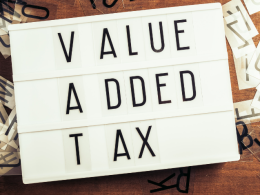A project report can be a crucial document for any business or individual working on a project. It is an essential tool used to communicate a project’s progress, challenges, and outcomes to stakeholders, including sponsors, executives, and team members. This blog post will cover everything you need to know about writing an effective project report. From defining your objectives to identifying your audience, we will guide you through every step of the process. We’ll also provide tips on how to excel in project reporting and how to avoid common mistakes that could compromise the effectiveness of your report. Whether you are a seasoned professional or new to project reporting, this blog post has something for everyone. So let’s get started!
What is a Project Report?
A project report is a document that contains a detailed description of the project, its objectives, scope, and implementation. It is typically used by the best businesses to measure the progress of a project and identify any areas where further improvements are needed.
Project reports are an important part of any business and can be used to track the progress of a wide variety of projects. They can assess whether a project is on track and identify areas for further work. Project reports can also be useful for communicating the results of a project to stakeholders and other interested parties.
Importance of Project Reports

Project reports are important for a number of reasons. They provide a way to communicate the progress and status of a project to stakeholders, sponsors, and other interested parties. They can also help identify areas where improvements need to be made.
Project reports can help assess whether project objectives are being met. They can also help identify potential risks and issues that need to be addressed. In addition, project reports can help track progress and ensure that deadlines are being met.
Project reports play an important role in ensuring that projects are on track and meeting their objectives. They can also help improve communication between project team members and stakeholders.
How to Write a Project Report?
1. Define project report objectives
To define objectives for a project report, consider its purpose, target audience and scope. Identify goals for the report that align with those of the project. This helps create an effective report that can secure funding or support for future projects. Clarifying your project’s scope and tailoring your approach to suit stakeholders’ needs is also crucial.
2. Identify project report audience
When writing a project report, understanding the intended audience is critical for creating an effective and comprehensive report. Before beginning, ensure you have a clear purpose and scope. Define your objectives and set goals accordingly while identifying your target readership. Tailor the language and visuals according to the reader’s interests and knowledge level to deliver a meaningful message. Finally, use accurate data and compelling graphics to ensure that your comprehensive report speaks for itself.
3. Write a Project Report Outline
Defining your objectives is crucial when creating a comprehensive report on ‘How to Write a Project Report.’ Identify its purpose and tailor it to meet the needs of stakeholders such as management or clients. Next up is creating an outline that clearly defines sections like introduction or methodology while smoothly flowing to subsequent ones like results or conclusion. With real-time data from project management software and graphical representations of baseline vs actual costs and other metrics, presenting an effective report on future projects becomes easier.
4. Draft your project report
Begin drafting a comprehensive report for future projects by creating an outline including all the key sections and subsections. Ensure each section has a clear purpose and logically flows into the next. Use concise language and incorporate relevant data, graphics, and executive summaries to support project data. Edit carefully to avoid jargon and tailor to stakeholders’ needs while ensuring consistency across different types of projects.
5. Fine-tune your project analysis
Fine-tuning your project analysis is vital for ensuring that your report accurately represents the project’s progress and health. Review your data and findings meticulously to ensure their accuracy and relevance to the project’s objectives. Use headings and subheadings to organize your report clearly and concisely. Additionally, incorporate recommendations for future projects or improvements based on the analysis performed. Proofreading and editing are critical components of producing an effective project report that decision-makers can use.
6. Recommend next steps
When recommending the next steps in your project report or status report template, ensure they are feasible and address potential challenges and limitations. Include an outline/timeline for implementation and metrics for monitoring effectiveness. Rephrase writing points to avoid repetition but maintain clarity. Use graphics like graphs/dashboards to display project health updates easily. Start content with phrases like ‘Consider,’ ‘Outline,’ or ‘Include’ rather than first use the primary key term. Effective project reporting is crucial for successful decision-making by different project stakeholders.
Project Report Types
1. Project status reports
Regularly updating project status reports can keep all stakeholders informed about the project’s progress. It includes information on milestones achieved, tasks completed, and issues faced. The report’s data is presented clearly and concisely with graphs and an executive summary for easy understanding. By using a project management software or template, it becomes an effective way to track the project’s progress for future projects.
2. Project progress reports
You need to use Project Progress Reports to track the progress. You can find this report at regular intervals as it provides information about completed tasks, upcoming milestones, potential risks and issues that occurred during the process. Regular progress reports help keep all stakeholders informed and ensure that the project stays on track. For better readability, it’s essential to highlight key achievements and challenges clearly and concisely while avoiding unnecessary details.
3. Risk reports
A comprehensive risk report is essential for effective project management. To create one, you must identify potential risks and outline strategies to mitigate them. A risk assessment matrix can help prioritize and manage identified risks. It is important to be clear and concise in your reporting, highlighting key achievements and challenges while avoiding jargon. Effective reporting enables informed decision-making by stakeholders and ensures alignment with project goals. Using tools like graphs, dashboards, and project management software can help track progress in real-time.
4. Board/Executive reports
Project managers often share Board/Executive reports with stakeholders to keep them informed about the project’s progress. These reports should focus on essential elements such as budget, timeline, deliverables, risks and opportunities while keeping jargon at bay. By providing an overview of the project’s status in a comprehensive report with graphics or dashboards can help executives in decision-making. Effective reporting through templates or project management software has become a great way to ensure consistency in different types of projects.
5. Cost Benefit Analysis Reports
To make informed decisions, stakeholders need to understand the financial implications of a project. Cost-benefit analysis reports help analyze a project’s goals, costs, benefits, and risks. The comprehensive report helps identify areas where improvements can be made to maximize cost-effectiveness. It is critical to ensure accuracy and impartiality in such reports to evaluate potential risks comprehensively. Using project management software with dashboards, real-time graphs, along with an executive summary devoid of jargon helps summarize up-to-date information effectively.
6. Resource reports
Efficient management of resources is essential to ensure timely completion of projects within the given budget. Resource reports provide an overview of the resources used or required for the project, identifying constraints or bottlenecks that may affect timelines and budgets. Such reports include a breakdown of resource usage by task/phase with cost estimates and suggestions for optimization. Project managers use different types of project management tools to generate real-time data in different formats like graphs, dashboards, etc., making it easy for stakeholders to comprehend project health and potential risks.
7. Project variance reports
Comparing a project’s actual progress with its planned progress is crucial for effective project management. Project variance reports offer insights into deviations from the original plan and provide recommendations on how to correct them. These comprehensive reports often include information on a project’s budget, schedule and scope. They may also highlight potential risks and issues that have arisen during the course of the project. Using a variety of graphics and charts can help stakeholders understand this data more easily.
8. Gap analysis reports
Gap analysis reports are a great way to identify areas where improvements can be made for effective project management. These comprehensive reports include an introduction, methodology, findings, recommendations, and conclusion. Consistency is key when considering the audience and their level of understanding of project jargon. Incorporating graphs, info-graphics, and project management software dashboards provide real-time data on project status. This type of report can help inform the next steps for future projects by identifying potential risks and upcoming milestones.
9. Workload Reports
Team workload reports are a great way to track progress and measure team performance over time. By providing an overview of each team member’s workload, these reports allow project managers to identify potential issues that may impact project completion. Using a project management tool to generate real-time graphs and dashboards can provide valuable insights into the current status of your project’s progress. Additionally, including an executive summary and breakdown of your entire project using different types of reports (such as status updates or health assessments) can help stakeholders stay informed about future projects and potential risks.
10. Timesheet Reports
To keep track of a project’s progress, timesheet reports are an essential part of effective project reporting. By tracking the time spent by each team member on different tasks using a project management tool, you can identify bottlenecks and measure team performance. Timesheet reports should include details such as tasks performed, hours worked, dates, and notes or comments from the team member. Use graphs or project management software to show information visually for better clarity.
11. Project budget reports
Project budget reports comprehensively summarize a project’s financial details and constraints. From expenses to revenue, these reports help project managers identify potential cost savings and necessary adjustments to ensure project success. Comprehensive reports include elements like different types of project costs, actual versus expected costs, graphical representation of financial metrics, real-time tracking of expenses and other relevant aspects such as variance analysis, baseline data etc. By providing accurate data and transparency in reporting; project stakeholders can make informed decisions for future projects.
12. Project closure reports
A great way to evaluate a project’s progress is through Project Closure Reports. These types of reports provide an overview of the entire project and its completion. It is vital to ensure that these reports are clear and concise to help different people understand the purpose of the report. Comprehensive reports should include an executive summary with graphs or graphics showing metrics such as baseline versus actual costs or potential risks versus completed deliverables. Using effective Project Management tools like dashboards or real-time data tabulations, it helps stakeholders make informed decisions about upcoming milestones or potential risks for future projects.
Common mistakes to avoid while writing a project report

When writing a project report, it is important to avoid common mistakes in order to make your report as effective as possible. Here are some common mistakes to avoid:
1. Not Defining the Purpose of the Report
Before you start writing your report, take some time to think about its purpose. What are you hoping to achieve with this report? What do you want your readers to take away from it? Once you clearly understand your report’s purpose, you can craft your message more effectively.
2. Failing to Plan and Organize Your Report
A well-organized report is easier for your readers to understand and follow. Before you start writing, take some time to plan out the structure of your report. Create an outline of what you want to include in each section, and then flesh out each section with more detailed information.
3. Writing in a Passive Voice
Passive voice can make your writing sound dull and unclear. When possible, try to use active voice instead. Active voice makes your writing sound more direct and concise and can help engage your reader’s attention.
4. Including Too Much Detail
While it’s important to provide enough detail in your report so that your readers can understand what you’re trying to say, including too much detail can be overwhelming and confusing. Stick to the essentials and leave out any unnecessary information.
5. Neglecting to Proofread and Edit
After you have finished writing your report, take some time to proofread and edit it carefully. Look for grammatical errors, typos, and formatting issues. Ensure your message is clear and concise and your report flows smoothly from section to section.
6. Failing to Include Visual Aids
Visual aids such as charts, graphs, and tables can help to clarify complex information and make your report more engaging. Be sure to include relevant visual aids in your report where appropriate.
Conclusion
Writing a project report is an essential task that helps stakeholders understand the progress and current status of the project. It also helps in identifying potential risks, changes, and future plans. A good project report should be concise, informative, and provide accurate information. To write a successful project report, you must define your objectives, identify your audience, create an outline, draft your report, fine-tune your analysis, and recommend the next steps. Different types of project reports include status reports, progress reports, risk reports, board/executive reports, cost-benefit analysis reports, resource reports, variance reports, gap analysis reports, workload reports, timesheet reports, budget reports, and closure reports.












